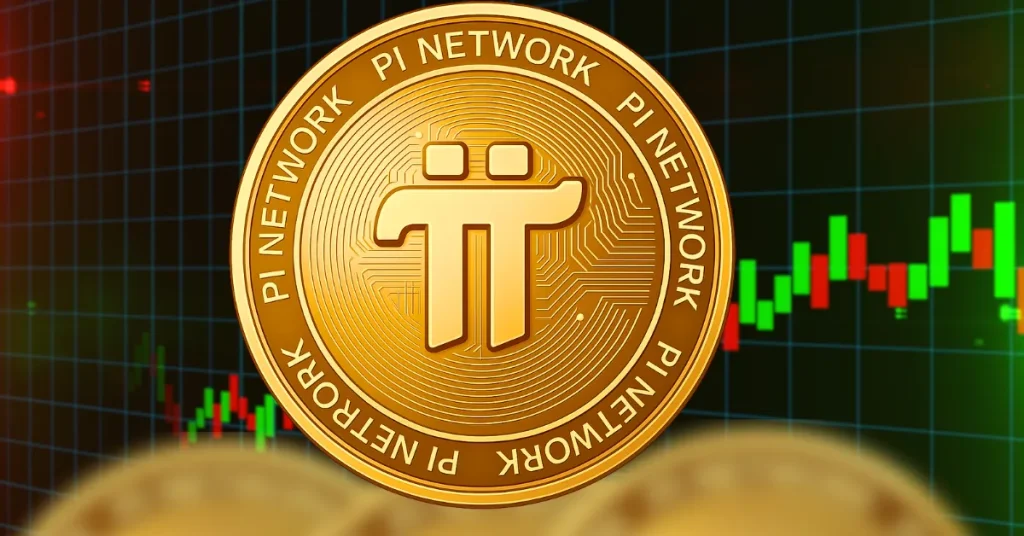
The Pi Network has emerged as a notable player in the cryptocurrency landscape, sparking both excitement and skepticism. To fully grasp its role in the digital currency ecosystem, particularly in comparison to stablecoins, it is essential to examine its technological foundations, market positioning, challenges, and future prospects.
The Genesis and Vision of Pi Network
Pi Network was conceived with a vision to democratize cryptocurrency mining and usage, making it accessible to a broader audience through mobile platforms. Unlike traditional cryptocurrencies such as Bitcoin, which require substantial computing power and energy, Pi Network introduces a “mobile mining” concept. This approach aims to lower the barrier to entry, allowing users to mine Pi coins using their smartphones without significant hardware investments or energy consumption.
The network’s founders emphasize the importance of community engagement and decentralized governance. By leveraging a consensus algorithm that rewards users for their participation and contributions, Pi Network seeks to create a more inclusive and user-driven ecosystem. However, this innovative approach has also drawn criticism, particularly regarding the actual market value and utility of Pi Coin. The delayed launch of the open mainnet, which allows external trading, has raised concerns about transparency and the potential for over-speculation. The price volatility and lack of a firmly established market value have contributed to cautious perspectives from investors and analysts.
Pi Network vs. Stablecoins: A Comparative Analysis
Stablecoins represent a distinct class of cryptocurrencies designed to maintain price stability by pegging their value to real-world assets such as the U.S. dollar, gold, or baskets of commodities. This backing aims to mitigate the wild price fluctuations typical of cryptocurrencies like Bitcoin or Ethereum. Stablecoins have gained significant traction in the crypto ecosystem due to their ability to facilitate consistent value exchange, making them preferred mediums for transactions and value storage.
In contrast, Pi Network is not officially a stablecoin. It lacks confirmed ties to tangible assets or a fixed peg, and its price is free-floating, susceptible to market dynamics and speculative behavior. Despite this, some narratives position Pi—or its upcoming protocol iterations—as potential successors or alternatives to conventional stablecoins. These emerging models tout algorithmic mechanisms and community consensus as means to achieve stability and scalability without traditional asset backing.
The divergence between Pi Network and stablecoins highlights the broader spectrum of cryptocurrency designs and their respective advantages. While stablecoins offer stability and reliability, Pi Network’s approach focuses on accessibility and community-driven governance. The success of Pi Network will depend on its ability to deliver on its promises while navigating the complexities of the cryptocurrency market.
Technical and Regulatory Challenges
The promise of Pi Network as a global currency candidate faces substantial hurdles, particularly in terms of scalability, security, and decentralized governance. Algorithmic stablecoins, which might resemble Pi’s future model, historically confront systemic risks, including failures when confidence wanes, as observed in high-profile collapses like Terra’s.
Further regulatory scrutiny is inevitable. The increasing attention from financial regulators worldwide, combined with demands for transparency and compliance, places Pi Network under pressure to demonstrate legitimacy and robustness. Failure to meet regulatory expectations could result in legal complications and diminished investor confidence.
Market Dynamics and Competition
Pi Network operates in a crowded space where traditional stablecoins such as USDC, USDT, and DAI have extensive market trust, regulatory backing, and ecosystem integration. These coins benefit from established liquidity pools and acceptance in various financial platforms. For Pi Network to carve out space, it must deliver clear advantages—such as superior scalability, user-friendly mining, or better governance mechanisms.
Recent price rallies fueled by rumors, including alleged partnerships with entities like Stellar, illustrate market optimism but also highlight the speculative nature of Pi Coin’s current valuation. Such speculation can boost short-term momentum but does not guarantee sustainable growth or adoption.
Community and Real-World Adoption
A strong and engaged community is a defining feature of Pi Network’s identity. Millions have participated in mining and discussions, hinting at a potential grassroots movement supporting its expansion. However, community dissatisfaction has surfaced, particularly regarding delays, transparency issues, and token price declines.
For Pi Network to materialize as a viable digital currency, bridging technical innovation with tangible real-world use cases is essential. A digital currency’s legitimacy is often measured by acceptance among merchants, integration in payment systems, and the ability to maintain stable purchasing power—all areas still evolving for Pi Network.
Future Outlook: Between Promise and Pitfalls
Pi Network represents an intriguing experiment in reimagining cryptocurrency accessibility and governance. Its vision of becoming a global peer-to-peer currency aligns with broader goals of financial inclusivity and decentralization. The integration of algorithmic principles and community consensus mechanisms, if successfully executed, could pioneer new paradigms beyond traditional stablecoins.
Yet, significant questions remain unanswered. Will Pi Network overcome regulatory, technical, and market challenges? Can it deliver stability without traditional asset backing? How will it navigate competition from well-established stablecoins and cryptocurrencies? The answers will determine whether Pi evolves as a disruptive force or remains a speculative footnote.
Conclusion: Navigating the Crossroads of Innovation and Reality
Pi Network stands at a fascinating crossroads. Its innovative approach to mining and ambitions for a global currency offer a glimpse into the future of digital finance—one that prioritizes accessibility and community empowerment. However, the journey is laden with complexities, including market skepticism, regulatory scrutiny, and the imperative for real-world adoption.
Maintaining a balanced perspective requires recognizing Pi Network’s potential alongside a sober appraisal of its limitations. Whether it will mature into a stable, widely accepted digital currency or fade amidst competitors hinges on forthcoming technical developments, transparent governance, and its ability to inspire genuine use beyond speculative trading. This unfolding narrative embodies the dynamic, ever-evolving nature of the cryptocurrency ecosystem itself.





